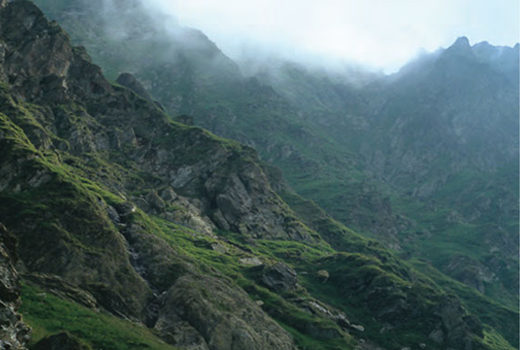Mining and the Destruction of Baia Mare
More than 100,000 cubic meters of heavily poisoned water, rich in cyanide and other toxic heavy metals, such as copper and zinc, spilled through a tailings dam breach Jan. 31, 2000, in Baia Mare, capital of Maramures County, Romania. The contaminants thus began their journey through the Carpathian Mountains en route to the Tisza River Basin. In a four-week period, the toxic plume, containing enough cyanide at the outset to kill one billion people, traveled 2000 km through Romania, Slovakia, Ukraine, Hungary and Serbia and Montenegro before entering the Black Sea. Further complicating the event, this area within the Carpathian Basin serves as Europe’s last refuge for such diverse species as brown bear, wolf, lynx, European bison, moose, wildcat, chamois, golden eagle, eagle owl, black grouse and many unique insects.
The catastrophic Baia Mare mining tragedy not only proved the potentially disastrous consequences of downplaying environmental risks for economic gain but also spotlighted transboundary water pollution. From the spill source to the intersection where the Tisza River finally enters the Danube River, the toxic plume killed all water plankton as well as 38 fish species totaling 1,240 tons. Following the accident independent tests conducted jointly by the United Nations Environmental Programme (UNEP) and the United Nations Office for the Coordination of Humanitarian Affairs (OCHA) stated that wildlife mortality after the spill increased to as much as 100 percent for some species, such as otters and beavers. In addition, scientists found dead gulls, black cormorants, mute swans, foxes, roe deer, pheasants, pigeons and hares. The UNEP/ OCHA team also pulled dead donkeys and horses out of the river; at least two endangered white-tailed eagles were found — one dead and one paralyzed. The spill’s ecological consequences were so severe that less than a quarter of the pre-spill species survived to the summer of that year. And flora, along and in the central part of the Tisza River, was also destroyed.
The Tisza River Basin wildlife was not the only victim of the toxic plume. The fishing and tourism industries were also crippled. In addition, contaminated drinking water became a major issue for villages near Baia Mare, including Bozanta Mare, which had 80 times the permissible cyanide level in its well water, according to a UNEP/OCHA report. Luckily, Hungarian authorities were able to prevent all contaminated drinking water from entering the two largest cities along the Tizsa River. Ultimately, 2.5 million citizens in the two-country, 24-county area were seriously impacted by tainted drinking water, which increased costs for sanitation plants and industries because of public health production interruptions.
Life Before the Spill
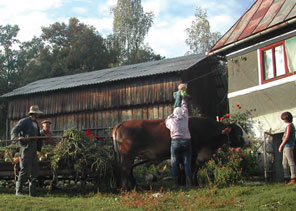
Photograph courtesy of Alburnus Maior
Situated at Romania’s northern border, Maramures County has been an important mining region for more than 2,500 years because of its abundant mineral resources. While the toxic spill’s impact on Baia Mare had a disastrous effect, poor environmental conditions already had existed in the area. According to Anamaria Bogdan, public relations and campaign manager for “Campaign for a Cyanide-Free Romania,” historical pollution, particularly with respect to water, is a great cause for concern. “The mining activities, as a result of the introduction of the cyanide-leaching process in the 1960s, have contributed to the creation of several tailings dams in the area and have posed a threat to the environment and to people as they are located quite close to inhabited areas.” Even prior to the 2000 catastrophe, Baia Mare was cited by the World Health Organization (WHO) as an environmental “hot spot” in its report titled Concern for Europe’s Tomorrow. For centuries the region’s environment and its river systems had accumulated toxic heavy metals, as well as persistent organic pollutants, such as those from a 150-year-old lead smelter. In fact, before the spill at Baia Mare, the Sasar River, also known as the “Dead River,” showed cyanide concentrations nearly 88 times the permissible level with lead and arsenic in the Sasar, Lupas, Somes and Tisza rivers documented at 100 to 1000 times above acceptable concentrations.
Chronic pollution is seen not only in the environment but also in the human population residing near the mine sites. In 1999 Romania’s Environmental Health Center staff, led by Eugen Gurzau, M.D., Ph.D., studied Baia Mare children ages 2 to 6 to assess the effects of long-term exposure to lead in the environment. Researchers discovered very high lead levels in the soil, air and water with blood samples revealing six times the safe level for some children. In addition, residents near mining areas were plagued with chronic respiratory disease and illness. In fact, life expectancy in Baia Mare is 12 years below the Romanian national average.
The Impact of Tailings Ponds and Dams
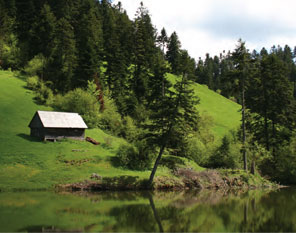
Photograph courtesy of Alburnus Maior
Romania’s inhabitants have mined gold since at least the first century A.D. However, because accessible gold had already been extracted by the 1990s, most mines were no longer profitable with the then-current technology. Leftover waste, mixed with cyanide and other heavy metals, was permanently disposed of as cheaply as possible, as is standard international practice, in tailings ponds and dams. In fact, the Environmental Protection Agency (EPA) listed an incredible 215 of these toxic ponds and dams in the area. Leftover tailings ponds and dams produce great concern not only because these potentially chronically leaking waste sites restrict expansion of urban development but, more importantly, because they are located near residential locales. Romania experienced what could be considered a “new” gold rush in the late 1990s with the advent of new technology able to recover leftover gold and silver from old tailings sites. Numerous globally operated mining companies, usually in joint venture with formerly state-owned Romanian companies, had acquired licenses to revive old mining projects.
Over a seven-year period Aurul S.A., a stock company jointly owned by Australia’s Esmeralda Exploration Limited and by Romania’s Remin, obtained environmental permits necessary for production at Baia Mare in 1999. Claiming to use the most modern, safe and efficient technology available, the Aurul undertaking was projected to recover about 1.6 tons of gold and 9 tons of silver per year from existing tailings ponds for 10-12 years. Ironically, this effort to “clean” three highly toxic waste sites did not go as smoothly as anticipated. Baia Mare operations commenced in spring 1999 and, before the end of that year, two confirmed leaks had already occurred in the unprotected pipeline system that transported highly toxic cyanide material. In addition, major errors occurred in actual construction of a new tailings pond: using light materials such as soil with a high proportion of sand, using a plastic lining not designed to deal with emergencies and not constructing the dam high enough or sturdy enough, according to a UNEP/OCHA team report following the accident. Just prior to the tailings dam breach, temperatures in Baia Mare remained below freezing for five weeks beginning Dec. 21, 1999. Even though operation of the tailings processing had stopped, a reported 60-70 cm of accumulated pond snow led to an uncontrolled rise in the water level. Because no mechanism to catch the wastewater overflow was provided in case of such an emergency, the water level in the tailings pond rose uncontrollably until finally overflowing the dam and washing away a stretch approximately 25 meters wide by 2.5 meters deep. Although Aurul was operating in line with government permits, according to the UNEP/OCHA report, the newly engineered dam system failed under circumstances easily foreseen.
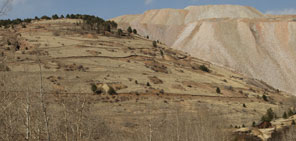
© iStockphoto.com/Plez
In 2007 Romania joined the European Union (EU) and adopted the latter’s more stringent environmental standards. Now before new mining activity is allowed, an Environmental Impact Assessment (EIA) must be submitted to Romania’s Ministry of Environment. “There are only two mining prospects in Romania awaiting the necessary environmental permits to begin activities, one of which is Romaltyn, which would resume ore processing activities with cyanide in Baia Mare at the exact same Aurul tailings dam that broke in 2000,” explains Bogdan. As if the Romaltyn threat were not significant enough, incredibly, only eight years later plans for Europe’s new, largest gold mine again worry residents of not only Romania but also of the neighboring Tisza River Basin countries.
Rosia Montana — The Next Baia Mare?
Located just south of Baia Mare, in the Apuseni Mountains of West Central Romania, is the village of Rosia Montana. The country’s oldest documented mining settlement dates back more than 2,000 years to ancient times when Romans invaded Transylvania in search of resources to rebuild their empire. Naming the area “Alburnus Maior” or “the big settlement,” the Romans extracted gold and other precious metals there. To date this area is still home to Europe’s largest gold-ore deposit. Now awaiting necessary permits to begin mining operations again in this area is Gabriel Resources, a Canadian company. Gabriel’s subsidiary, Rosia Montana Gold Corporation, has a 17-year lease on a mining field located in and around the village of Rosia Montana.
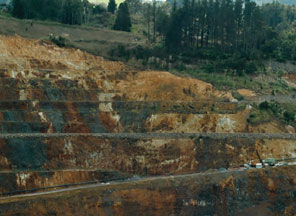
© iStockphoto.com/gprentice
Opponents of Rosia Montana Gold Corporation’s project, primarily local villagers, stress the fact that they are not against mining but rather against an irresponsible project that will destroy the environment and their town, as was the case with Baia Mare. If the project becomes a reality, it would be the largest opencast cyanide leach gold mine in Europe and would contain an estimated 300 tons of gold and 1,600 tons of silver. Gabriel claims the project “creates an opportunity to remediate past damage from the ravages of 2,000 years of uncontrolled mining, leaving the region’s rivers and soil ‘cleaner’ than we found them.” However, the mine is projected to be seven times the size of the Baia Mare project while introducing the cyanide-leaching process to the Rosia Montana mining site for the first time. This development would be situated along the Aries River, considered to be the most important water source in the region. The tailings pond for the project, located immediately above the town of Abrud, will contain waste consisting of cyanide and other destructive heavy metals such as lead, sulfur, iron, mercury, copper and zinc. The Aries eventually flows into the Danube River, which creates the potential for another catastrophic event involving the Tisza River Basin. This scenario is not unlike the Baia Mare tragedy.
While potential environmental consequences of this mine are daunting, so is the fact that, to begin excavation of the one-mile wide mine, displacement of the entire Rosia Montana village and its 2,000 residents must first occur. According to Gabriel Resources, around half the residents of Rosia Montana have accepted land buy-outs. However, Alburnus Maior, a community organization founded in 2000 by local Rosia Montana property owners, has voiced their collective unwillingness to leave their land. Stephanie Roth, 2005 recipient of the prestigious Goldman Environmental Award for her efforts as Alburnus Maior campaign coordinator, claims that houses acquired by Gabriel are only a small percentage of the land the company actually needs to acquire. “When Gabriel Resources boasts about how many houses and properties they have purchased, they are lying by omission. If you look at what the company has actually purchased, it is only between 27 and 30 percent of the lands they need under the project footprint,” explains Roth. Alburnus Maior is opposed to the mine for not only environmental reasons but also for cultural and social reasons. According to Roth, Romanian people are averse to selling their land because, for them, ownership of land comes with great responsibility. “The locals of Rosia Montana have less problem selling their houses because they can rebuild a house anywhere, as people in Romania tend to be very skilled. However, they are reluctant to sell big chunks of land because they see themselves as stewards to this environment and, for them, land is a question of security.”
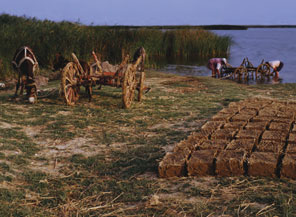
© iStockphoto.com/fkienas
Romania’s most prestigious scientific organization, the Romanian Academy, stated its opposition to the Rosia Montana project in 2003 and reaffirmed its position in 2006 after deciding the mine would not bring sustainable development nor solve the area’s social and economic problems. As a result of this and other efforts, the area’s land use plan was returned to “inhabited” status, meaning its residents could once again open new businesses. Working to stimulate the local economy, Alburnus Maior has been active in assisting local families as they develop and fund their own companies. “If people have something else they can live off, the mine becomes less and less important,” claims Roth. Regardless, Gabriel Resources is continuing its quest to attain the required land. Legally, the area’s archaeological significance is its biggest hurdle. Because Rosia Montana contains historical artifacts unique to the world, it is considered to be Romanian cultural patrimony protected under the national interest. As a result, the state has required the mining company to ensure that the area is free of such artifacts. A huge scandal erupted when a Gabriel Resources archeological team claimed to have found nothing of value in the mountainous area containing the most gold. This assertion resulted in the release of the particular land parcel to Gabriel.
In fact, it contained some of the world’s most unique archaeological findings dating back to Roman and pre-Roman times. According to Roth, after the de-protection certificate was granted to Gabriel, a CD containing the area’s actual documented findings was sitting outside the door of the Alburnus Maior headquarters. This unexpected event resulted in a court decision to return the de-protected area to its former protected status under Romanian law.

Photograph courtesy of Alburnus Maior
In September 2007 the Romanian Ministry of Environment decided to suspend the review process of Gabriel’s Environmental Impact Assessment. Without EIA approval Gabriel is blocked from mining in Rosia Montana. “If you look at the activity of Gabriel Resources in Romania in the past three years, it has nothing to do with any actual mining activity. Rather, it has been centered around making ads on television to promote the mine,” explains Roth. As far as she and other united Alburnus Maior landowners are concerned, the mine at Rosia Montana will never be a reality because their refusal to surrender their properties is without compromise.
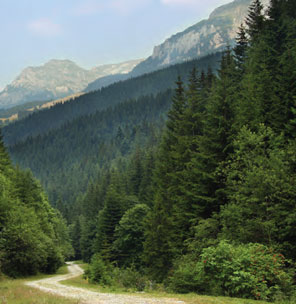
© iStockphoto.com/remsan
Still, Gabriel Resources maintains the project will be the first approved under the European Union’s more stringent environmental laws. In addition, it has been rumored that Newmont, the Denver-based American mining giant, which at one point had as much as a 20 percent stake in Gabriel Resources, will buy out Gabriel if the necessary production permits are secured at the Rosia Montana mine.
While it is difficult to imagine a world without mining, it is imperative that people, particularly Americans whose civilization is based on material wealth, begin to rethink what they need to take from the earth. In the process they should redefine the acceptable risks in doing so. According to Bogdan, more sustainable forms of mining are available, but companies are unwilling to invest in these more expensive technologies because of reduced profits. So the question quite simply is “What is more important to humanity’s survival: material wealth or the health and welfare of the world’s ecosystems that sustain us all, regardless of where we live?” With this perspective in mind, making and supporting the “right” decision becomes easier.

